As the old saying goes, "Men are willing to die for those who appreciate them, and women are willing to makeup for those who appreciate them". From ancient times to the present, women have always been the trendsetters in the pursuit of beauty.
From Chinese traditional clothing to Hanfu makeup to various accessories, each item has passed through history and left a strong mark in the history of women's lives, becoming a classic art appreciation.
Previous articles on traditional Chinese earrings have already done some telling about women's earrings and their culture from ancient times to the present, but today we're going to talk about the history of another type of ornaments - traditional Chinese hair accessories.
Derivation of the traditional Chinese hair accessories
In ancient China, Confucianism was the orthodox idea of the society, emphasizing "ritual". Hair, as part of the body, is considered unclean and rude if it is disheveled. Therefore, men at the age of 15 years need to tie the hair as a bun, women at the age of 15 years need tie hair as a bun and wear Ji (笄), already a kind of "ritual" custom in ancient time.
As to when the custom of wearing hair accessories began, it is probably difficult to prove precisely. In the beginning, people wore hair accessories in order to make more convenient for work, so the headgear used was relatively simple, such as branches, vines, cloth, and other things, the main purpose was to organize the hair. It was only later that the hair accessories became decorative for grooming.
However, for women, it was an important item for them to show their status. In ancient times, women were very particular about their hair and the hair bun that they wore. As a result, a wide variety of hairstyles (Ji, 髻) were developed. The various hair accessories were created by women to make these hairstyles more charming and more stylish.
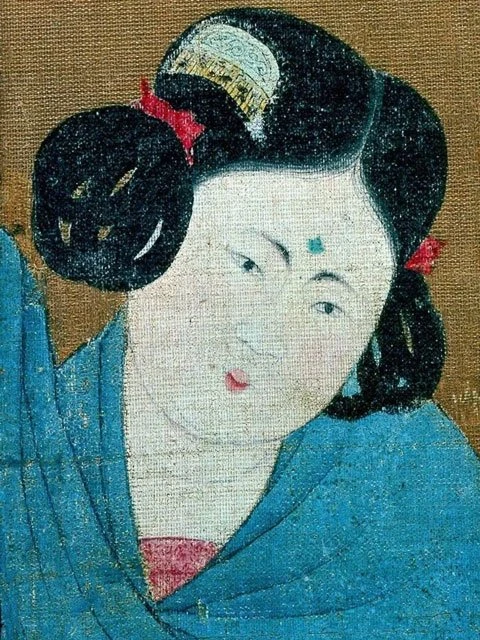
Gorgeous and versatile traditional Chinese hair accessories
Shubi (梳篦, shū bì, comb)
Among the many traditional Chinese hair accessories, the Shubi was the first to appear, and was almost a necessity for women in ancient times. Shu's teeth were thick and thin, mainly used for combing hair, while Bi's teeth were fine and dense to remove dirt from the hair. From the Wei and Jin dynasties that the Shubi was no longer just a tool for women to take care of their hair, but also became a decoration for their heads.
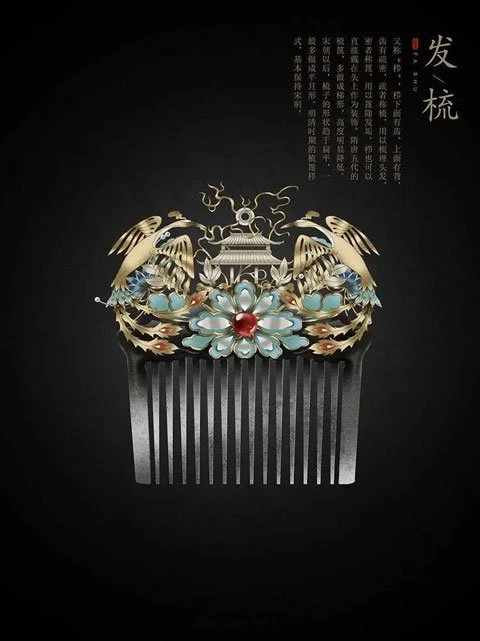
Shu (梳)
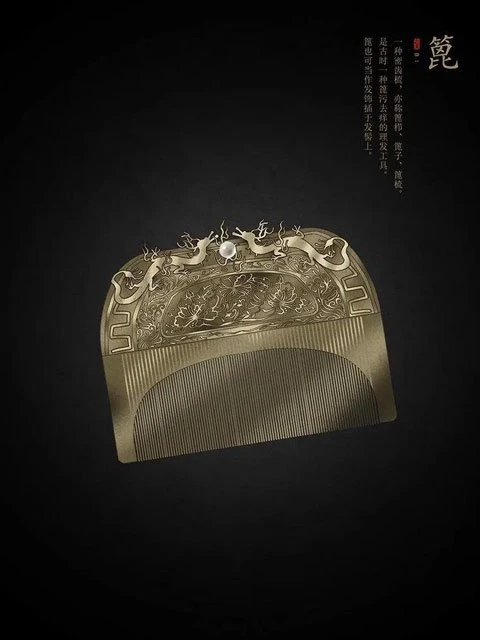
Bi (篦)
The popularity of wear Shubi as decoration was greatest in the Tang and Song dynasties. It was in the mid to late Tang Dynasty that the insert Shubi became popular, as women were trying to decorate their hair with a towering bun and Shubi.
Some of the combs used as headdresses at that time were not open-toothed, with a single comb-shaped piece of gold inserted in front of the bun, exposing only the back of the comb. The number of combs gradually increased as symmetry became more important, with two or even six combs inserted in groups.
Zan (簪, zān)
Zan was originally called Ji (笄), but it was only after the Qin and Han dynasties that it became known as Zan. Early Ji, made mostly of stone, bone, bamboo, look more primitive and rough, but did not lose a kind of rustic beauty.
By the Shang and Zhou period, the head style of Ji began to diversify, the emergence of umbrella-shaped, geometric shapes, and a variety of birds and animals shape. Zan from the Qin and Han dynasties onward became more elaborate in style and craftsmanship, and materials such as gold, jade, and green feathers also became popular.
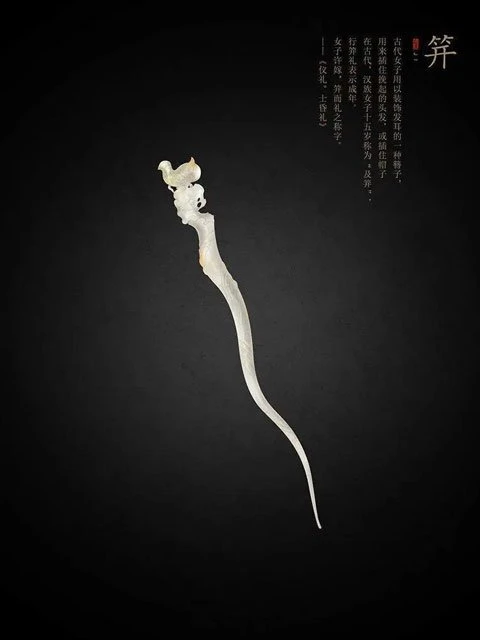
Ji (笄)
In the imperial court of the Qing dynasty, Zan was the best of all accessories for imperial concubine' heads and was made with great care, the head of Zan often made from a single piece of jadeite, coral crystal, or ivory.
The variety of styles and patterns of hairpins was unparalleled in previous eras, and the style of the hairpin with the pin integrated into the head was particularly valuable.
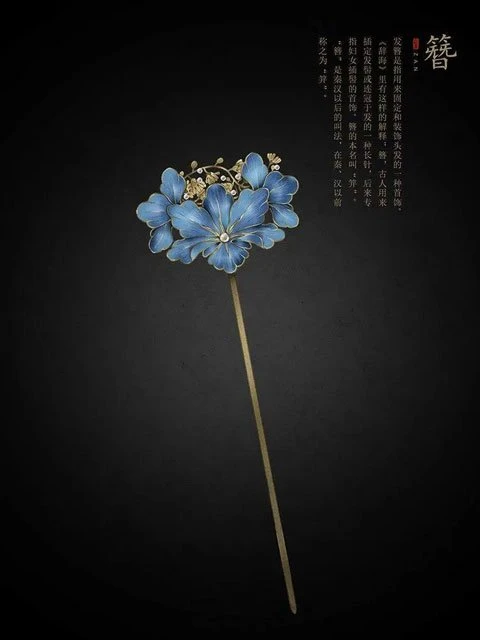
Zan (簪)
Zan then evolved into jewelry items such as Touhua (头花) and Biantou (扁头) late.
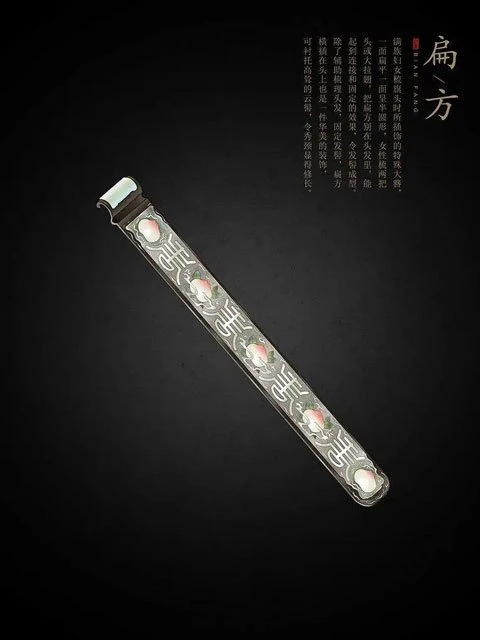
Biantou (扁头)
Chai (钗, chāi)
In ancient times, traditional Chinese hair accessories also included an ornament very similar to the Zan, called a Chai.
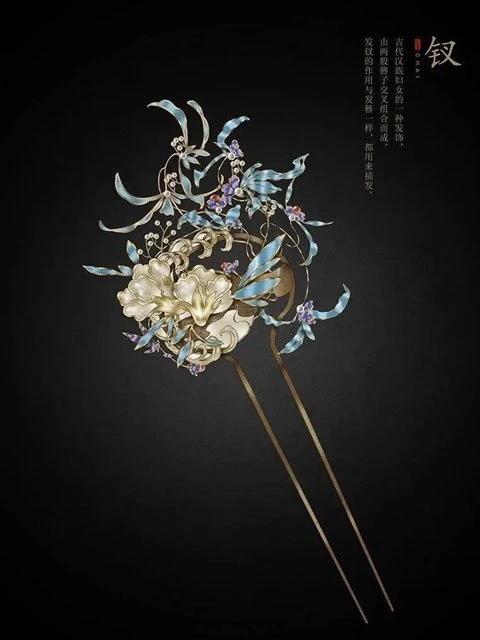
Chai (钗)
Chai was usually made of pearl, jade, gold, and silver combined into flowers or other shapes, attached to the two or more strands of long pins that held the hair in place, and was inserted at the bun.
Chai can be worn in a variety of ways, and the number of different ways to wear it varies according to the needs of the bun. Generally, a hairpin with the same pattern is placed symmetrically on the top of the bun in two opposite pairs, one on each side.
In addition to being an ornament for a woman's hair, Chai was also a token of farewell given by lovers or couples in ancient times. As a parting gift, a woman would divide her Chai in two, giving one half to her partner and keeping the other half for herself, to be put together again on the day of their reunion.
Buyao (步摇, bù yáo)
Buyao evolved out of Zan, Chai, the base is usually Chai and then adorned with moving flowering branches, butterfly and bird wings, and dangling beads. They are made from a variety of materials, including gold, silver, agate, and pearls, and are highly crafted.
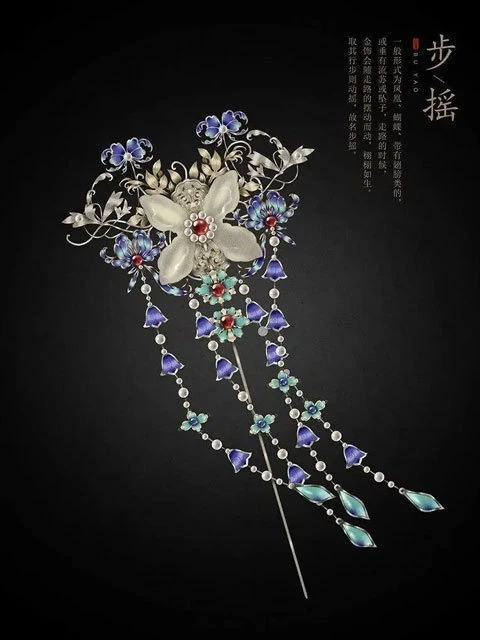
Buyao (步摇)
During the Wei, Jin, North and South Dynasties and the Tang Dynasty, there was a high degree of love for the Buyao. During the Wei and Jin dynasties, the Buyao was relatively slender, consisting of bent gold and silver filaments in the form of flowering branches, so that the Buyao was worn on a woman's head, the slightest movement, the flowering branches would tremble.
In the Tang Dynasty, the use of Buyao became more common and could be worn by both nobles and commoners alike. Buyao in the Tang dynasty were mostly made of gold and jade in the shape of phoenix birds, with beads hanging from the mouths of the birds. As the body moves around, the beads shake.
In addition to the above Shubi, Zan, Chai, and Buyao, ancient women's traditional Chinese hair accessories included flower crowns, phoenix crowns, and Huasheng (华胜), Moe, each with its own flavor.
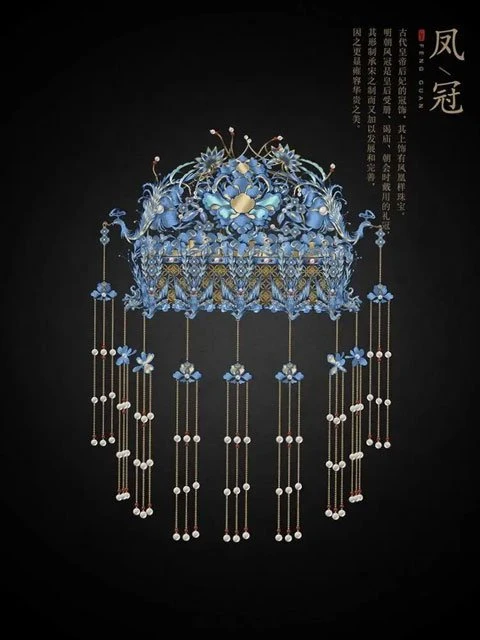
phoenix crowns
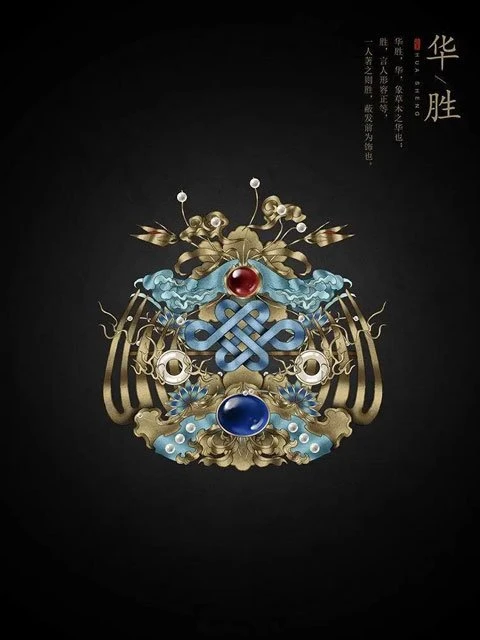
Huasheng (华胜)
Tian-Tsui
In addition, among the many beautifully made and ornate traditional Chinese hair accessories, there is another type of headdress making technique that must be mentioned, and it is the Tian-Tsui (点翠, kingfisher feather art). This craft started in the Han Dynasty and reached its peak during the Qianlong period of the Qing Dynasty.
Simply put, kingfisher feather art is the art of carefully setting the bright blue feathers on the back of a kingfisher onto a base made of different patterns of metal, and then setting them with pearls, agates, jadeite, and other gemstones.
The most important part of this craft is the feather gluing process, which must not be underestimated. The arrangement of the feathers, the direction of the grain, and the uniformity of the color are all tests of the craftsman's skill and patience.
The preciousness of Tian-Tsui craftsmanship is that although it is beautiful, it is delicate and fragile, and Tian-Tsui jewelry should be worn with extra care. It should be properly placed in a box after each use, and it should be kept intact without touching abrasion, exposure to sunlight, or water.
Although the Tian-Tsui jewelry is very stunning, but also very cruel, a small Tian-Tsui jewelry, using several or even dozens of kingfisher feathers, if the royal of the Tian-Tsui jewelry is even more exquisite and extravagant. The good news is that with modern technology, the blue satin ribbon can be used instead of the kingfisher feathers, reduce the damage.
The relationship between hair accessories and the status of women in ancient times
In ancient times, traditional Chinese hair accessories were not just a single item to set off a woman's face, but also an important symbol for women to distinguish their identity and status, and to reflect the changes of the times.
For example, women from commoner families mostly wore hair ornaments made of thorns as the raw material. While noble princesses and imperial concubines were different from ordinary women, in order to highlight their nobility, most of them would use hair ornaments made from precious gold, silver, and jade.
According to the status level, the traditional Chinese jewelry worn also has certain specifications and regulations. For example, the Empress, in order to reveal the temperament and status, wearing jewelry is also a symbol of noble identity, so the jewelry worn mostly for gold and jewelry, and the larger the better, the style of the more auspicious and noble meaning of the phoenix bird. Other harem women's status was lower than that of the empress, so the hair accessories they wore should become low-level layers.
In the TV series "Empresses in the Palace", it is clear that the concubines wear different hair accessories according to their different statuses, and each rank has its own style and corresponding accessories.
The beauty of traditional Chinese hair accessories that haven't gone away
In general, from the ancient traditional Chinese hair accessories culture, not only let us appreciate its beauty and stunning craftsmanship, but also let us feel the great relationship and social system between the status of women and accessories in ancient China. Regardless of any era, women's dress is often a bellwether for the economic and civilizational level of society.
Although in the fast-paced modern life, women no longer wear the gorgeous and complex headdresses that they did in ancient times, the beauty of ancient hair ornaments draws us in all the time, and helps us to understand the history of women's life and spread our imagination.
More about traditional Chinese jewelry & accessories can be found here:
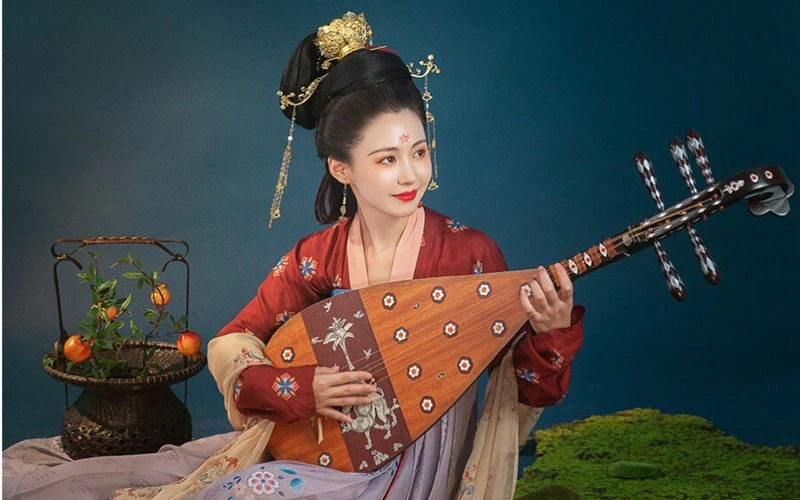
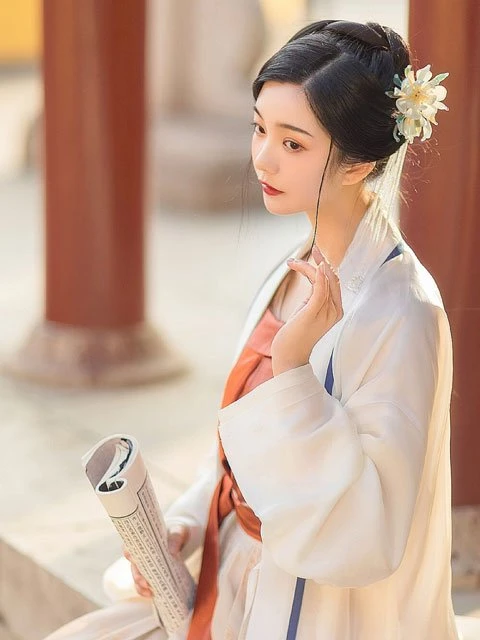

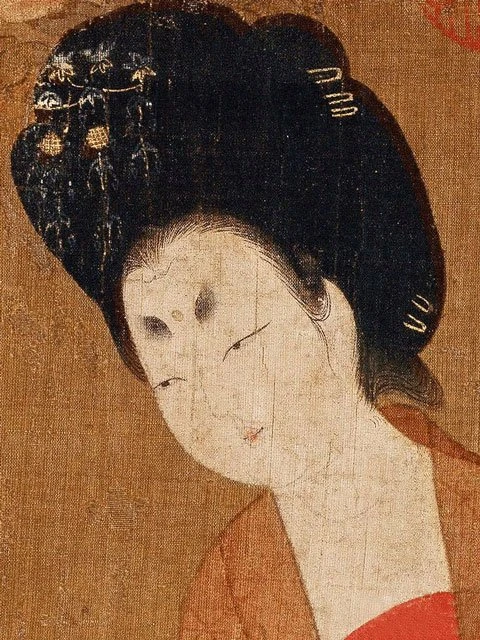

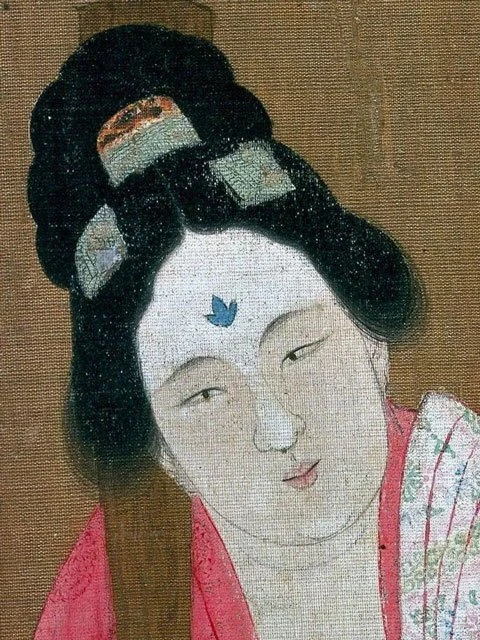
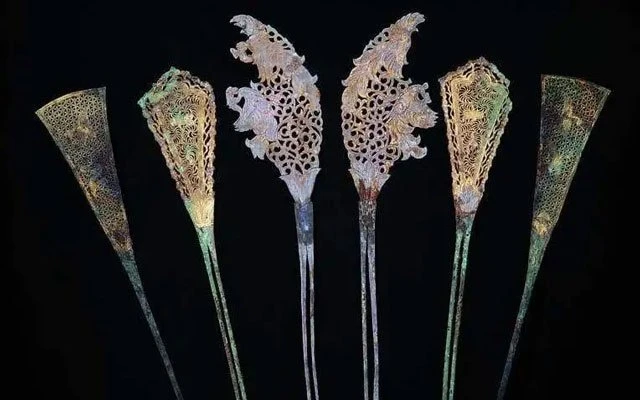
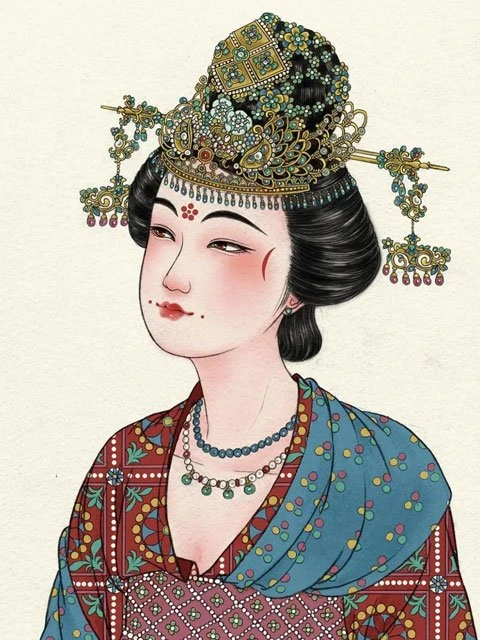

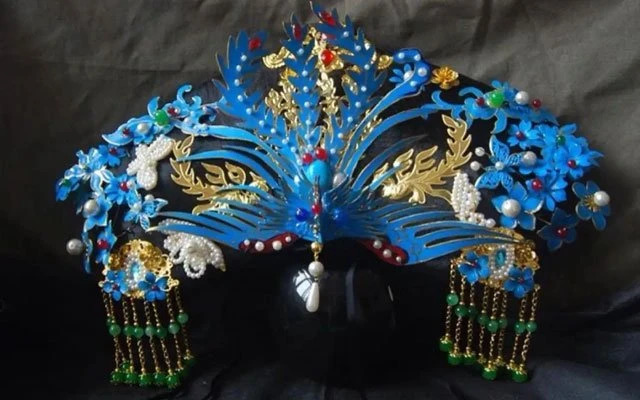
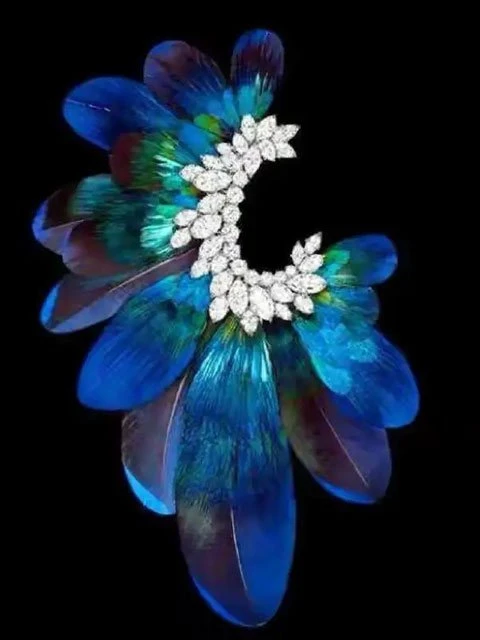

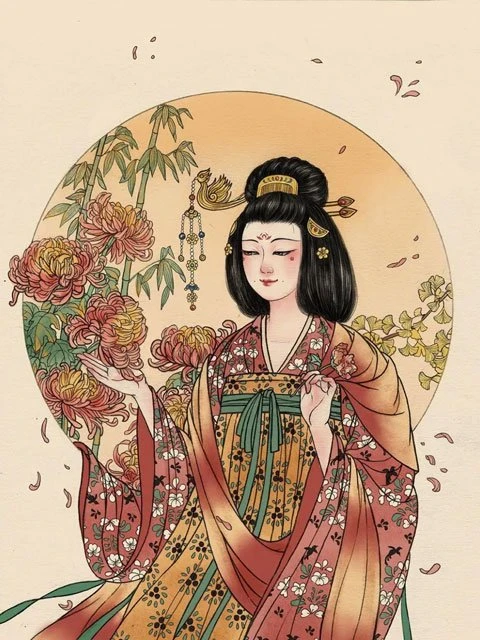

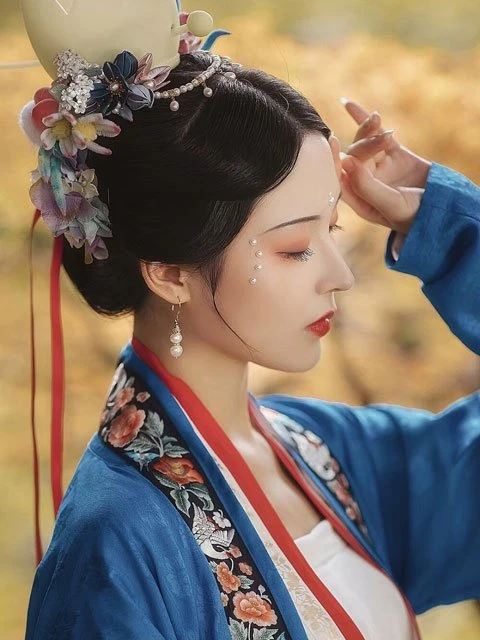
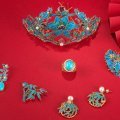
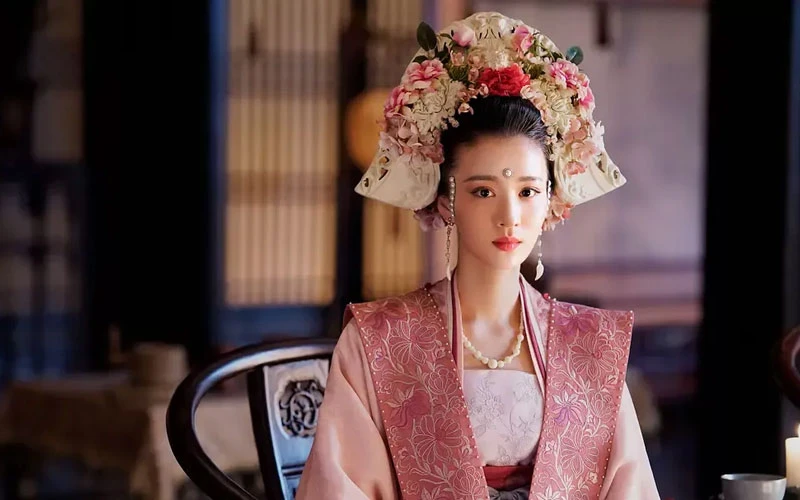


Prettyyyy😍😍
Indah
Thank you for writing this! The article was so helpful for learning about all the hair ornaments.
Oh my gosh! Thank you so much for this article! As I said, I love hair ornaments. Comprehensive and thorough about hair accessories for Hanfu. ❤❣🥰